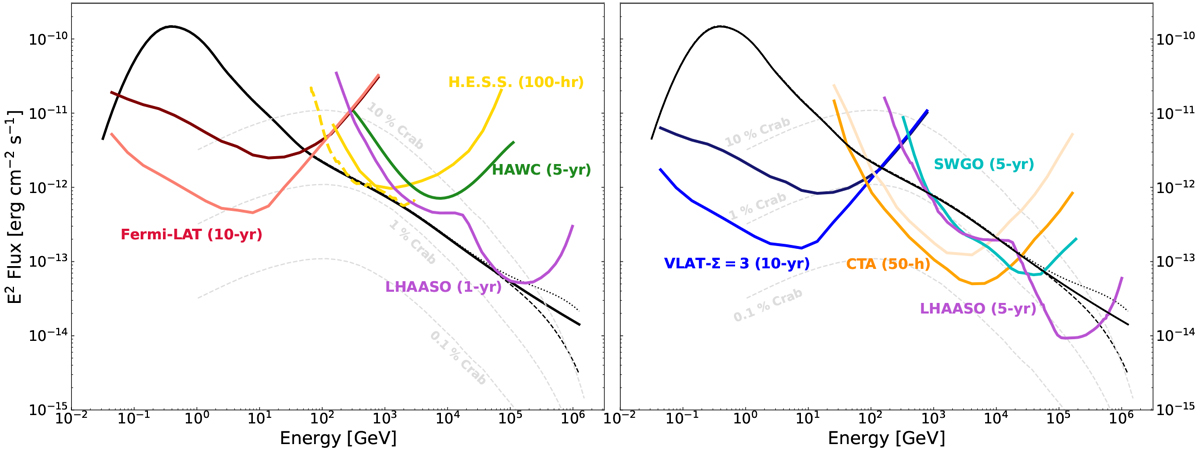Fig. 4

Download original image
γ-ray fluxes expected from a GMC with A = 1 compared to the point-like source sensitivities of currently operating (left) and future (right) γ-ray instruments. On the left: the ten-year Fermi-LAT sensitivity for the outer (light red) and inner Galaxy (dark red); the H.E.S.S. sensitivity for 100-h observations with the four-telescope system configuration (solid yellow) and for 50 h with the five-telescope configuration (dashed yellow); the HAWC five-year sensitivity (green); and the LHAASO one-year sensitivity (solid violet). On the right: the sensitivity for a hypothetical Very Large Area Telescope (VLAT) with a three-times-larger effective area (blue curves); the expected sensitivity of CTA from the northern (light orange) and southern (orange) sites, for 50 h of observations; the sensitivity of SWGO (cyan) after five years of observations; and the sensitivity of LHAASO (violet) for five years of observations. The black solid line is the flux of a MC of A = 1 illuminated by the CR sea. The two spectra above 104 GeV represent two options of CR proton spectra based on the spectra reported above 106 GeV by the KASCADE (dashed line) and ICEtop (dotted line) collaborations (see main text). As a reference, the fluxes representing 10, 1, and 0.1% of the γ-ray flux from the Crab Nebula (Cao et al. 2021) are shown.
Current usage metrics show cumulative count of Article Views (full-text article views including HTML views, PDF and ePub downloads, according to the available data) and Abstracts Views on Vision4Press platform.
Data correspond to usage on the plateform after 2015. The current usage metrics is available 48-96 hours after online publication and is updated daily on week days.
Initial download of the metrics may take a while.


